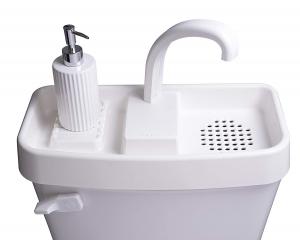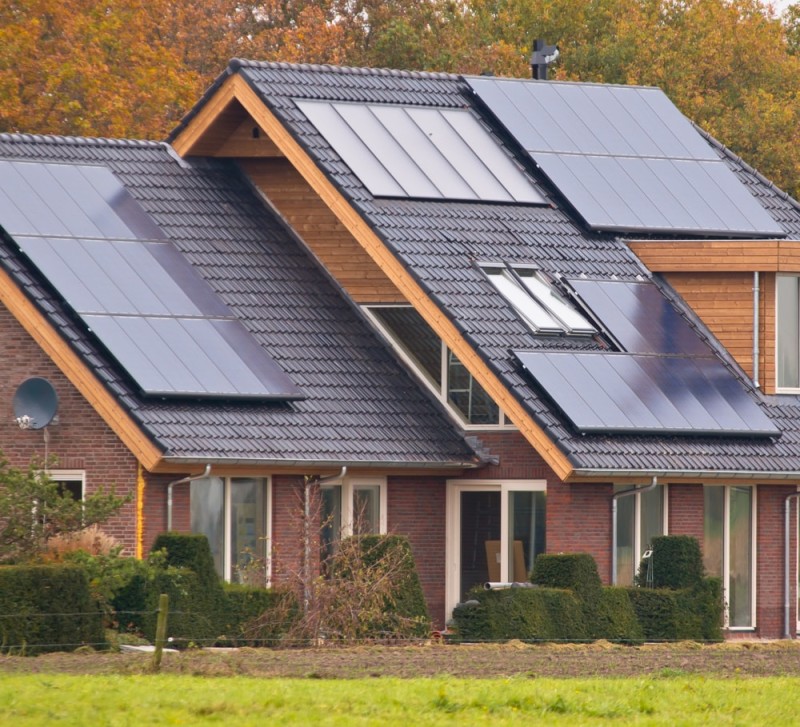Sustainability and Your Home
Ever since Greta Thunberg made her famous speech at the UN Climate Action Summit, climate change and sustainability are back on the table. The teen activist managed to cut through environment-related complacency and reactivated the pro-environment sentiment that the world so badly needs right now. The ferocity of her words made everyone stop and think.
Keeping in mind the new climate challenges that we face, our aim should be to reduce our carbon footprint and limit our contribution to the damage as much as possible. A zero-carbon footprint, though aspirational, is not possible and should not be a standard that we should be beating ourselves up about. However, we can greatly reduce our footprint by changing our lifestyle, our consumption, and our disposal habits. Small changes in the way we live, the food we eat, the products we buy, the way we manage our waste, all contribute and will collectively make a noticeable difference.
Pro-sustainability homes and green living are becoming very in vogue as people want to ensure that they have as small a role as possible in damaging the earth. In fact, green homes are starting the trend of green décor, where homes make conscious decisions to buy products that are verified eco-friendly and safe on the environment. Many people have also started examining the business models of service providers and manufacturers for any unfair and ecologically disruptive practices. All in all, though climate change is a crisis we are looking in the face, human beings are beginning to rally around to save the planet. And here is how you can join in.
Reduce the use of plastics
Pretty sure this is not “news” anymore and that’s good news! It means everyone is now aware of the hazards of plastic use. Yet you would be surprised how much plastic we have in our lives in not-so-visible forms. In some cases, plastic is unavoidable, but in every other way, we must look for ways to replace it in our households. If you already own plastic products, don’t throw them away as they would only add to landfills. Let them live out their designated lives and then recycle them around the house in some way. Old plastic cans and pet bottles can, with some creativity, become planters. Plastic bags can be spun into rugs and mats. Youtube is full of ways in which people have recycled old plastic into home utility and décor items. Find out about plastic collection initiatives in your area, so you can dispose old plastic products to companies that will use them in innovative, pro-environment ways.

Pet bottle turned planter Source: www.supersimple.com
As you dispose off old plastic products, purchase more sustainably made ones to replace them. For instance, instead of getting groceries home in plastic bags, carry your own cloth bags in your work satchels and backpacks. That way if you had an impromptu shopping trip, you’ll be ready.
Wherever and whenever possible, avoid plastic.
Opt for natural material in home goods, home décor, and interiors
Wood, ceramic, terracotta, jute bamboo, cane, coir hemp, cloth, sisal, seaweed, and recycled rubber are all environmentally friendly materials that you should look to introduce into your house. With wood, although there is an illegal logging issue to worry about, a lot of products these days specify if the product has been made from sustainable wood, from trees that are grown specially for their timber. These trees grow fast, are replaced fast, and cause less harm to the surrounding environment and ecosystem.
Quite a few environmentally friendly products are also artisan created ones, so you would be contributing to that industry as well…God knows they need it!

Bamboo wash basin Source: www.diytrade.com
Grow your own food
This is actually fun! Growing your own herbs, fruits, and veggies reduces the use of pesticides that leads to ozone depletion and health issues. If you think this is hyperbole, then consider this: DDT was found in Antarctic penguins and in species of dolphins in the Great Barrier Reef! The less pesticides we use, the less they go into our bodies and into the environment. Growing food also helps children appreciate our earth and nature better…and don’t we all need that? Besides this, having your own herb and veggies patch allows you to compost your food waste and reuse it as compost to enrich the soil. Not only do you reduce harmful pesticide use, reduce expenditure, and stay healthier and safer, you also reduce your waste! Herbs, fruit and veggie plants also green your spaces, absorbing carbon dioxide and generating oxygen, leading to cleaner air.

A tomato plant in a ceramic planter Source: www.tomatodirt.com
Conserve water
It’s no news that underground water supplies in various parts of the world are being threatened by depletion and pollution. In such a scenario, judicious use and reuse of water becomes important. Of course, everyone knows that they should turn water faucets off when they are soaping and scrubbing their hands at the wash basin, but insist on it at home, so the kids will know that it’s a real, practicable thing.
Even plumbing and sanitary ware is evolving to help conserve water. The next time you decide to change your sanitary ware in your washrooms, buy a dual flush that uses half the amount of water that traditional flushes do. If you are planning an overhaul of your bathrooms, then work out a plumbing system whereby the water you use for washing hands and in the kitchen can be directed to your toilet flush tank. Having a bath old-style, using a bucket and a mug, saves water compared to a shower, where you tend to lose track. Save the water that you’ve used to wash fruits and veggies and use it to water plants. If your house allows it, try rainwater harvesting and storing.
There are so many ways to recycle water…you just need to rethink your methods and lifestyle.
Water-saving sanitary ware where the wash basin outlet is connected to the flush tank to reuse water Source: www.greenliving.lovetoknow.com
Reuse old clothes
Old tshirts, bed covers, socks, shirts, denim can all be recycled into mats, bags, kitchen napkins, holders, and more. The Internet is replete with ideas and tutorials on how you can give new life and utility to clothes that you no longer use. Try to steer away from the lure of fast fashion. Easier said then done, right? As tempting as it may be, though, fast fashion creates more of an environmental problem than we are aware of. The fashion industry produces 10% of all human carbon emissions, is the second largest consumer of water in the world, and puts microplastics into our oceans. Instead, buy classic and good quality pieces of wardrobe staples and basic that do not go out of style. Like the white shirt or the LBD! Fast fashion garments that you do buy, try to recycle them around the house. Use your clothes longer and stick to classics rather than clamber onto every trendwagon. Find ways to mix, match, and alter older clothes for newer designs…all you need is a good tailor. Or if you have a sewing machine at home, you could create and repurpose your own clothing!
Bag made out of old t-shirt Source: www.marthastewart.com
Use solar power if possible
You guessed right—solar energy is what you get when solar panels convert sunlight into energy. Solar energy is greener, as there are no environmental emissions in its production. It is renewable and is derived from a non-depletable source—the sun. For homes in countries that enjoy a good amount of sunshine, using solar power to handle a share of the energy consumption load can help reduce bills and the cost to the environment. Solar panels can be fitted over your roofing to generate adequate energy to meet your household’s daily needs. Also, solar panels are not prohibitively expensive. Think about it.
Solar panels on roof to harness sunlight and convert into clean and green solar power Source: www.inspiredhomeideas.com
These are just a few changes you can make to convert your home into a green home. Really, it’s not rocket science. Once you start thinking along the lines of reducing, reusing, recycling, and repurposing, ideas will be everywhere and in every process. Over time, green thinking will become a habit and a way of life.
We hope you give these changes a chance and adopt a more sustainable lifestyle. As always, love the world you live in.





